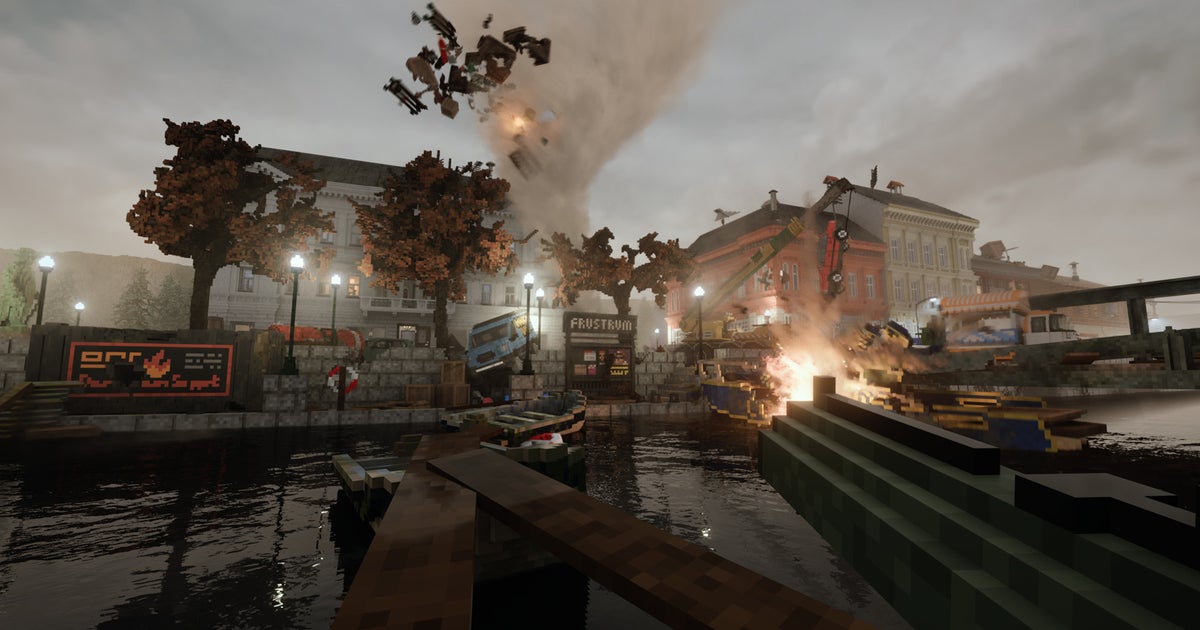
Teardown is a visual, physical showcase on PS5 and Xbox Series consoles
Teardown on consoles - the Digital Foundry tech review.
The voxel physics are just one half of the game's technically distinctive style. The other half is how the rendering is achieved. Teardown's primary visuals are achieved by intensive voxel tracing and very little in the way of standard rasterisation techniques. There are a lot of elements here that have a ray traced quality to them, like reflections for example. The game ray marches specular occlusion to give a kind of darkened reflective look on objects that is very realistic.
This technique - which eschews hardware ray tracing - makes it so that objects rarely ever look like they are glowing and out of place, but to ensure speed, reflections only get colour via screen-space information. Reflections become grey-toned if the objects in them move out of view. This technique applies to direct lighting too, as well as ambient occlusion, though Teardown doesn't deliver full-on global illumination.
That's all about offering up solid performance, where Teardown works very well overall, bar some odd issues on Xbox Series consoles (specifically Series X). In the fidelity mode, Xbox Series X and PlayStation 5 run the game internally at 1620p, targeting 60 frames per second - and based on comparisons to PC, it's running with graphical quality settings maxed out.
By comparison, Series S runs the game with an internal resolution of 864p, with only one rendering mode. The truth is, it looks rather blurry and rough, but at least it targets 60 frames per second and does a creditable job of staying there. PS5 and Series X also have performance modes which run at 1080p internally, which is just about enough to service the game's visual aesthetic. This can run with both 60fps and 120fps targets on the higher-end consoles.
PlayStation 5's fidelity mode is interesting as it's quite performant for a game doing so much tracing, mostly sticking to 60 frames per second. However, frame-rate can buckle when you start getting into more intense destruction or where there's a lot of smoke and fire on-screen, sometimes into the 40s. This can drop still further when using the game's sandbox modes or other gameplay types where you have more extensive access to destructive tools. The 1080p performance mode runs standard gameplay scenarios without issue, which makes sense as the game is cutting the total resolution in half - and that aids performance a lot. However, I find performance mode most interesting in its 120fps configuration, where simpler gameplay delivers full frame-rates, with only greater destruction causing dips beneath to the 90-100fps area. This is totally reasonable bearing in mind the load on the hardware.


